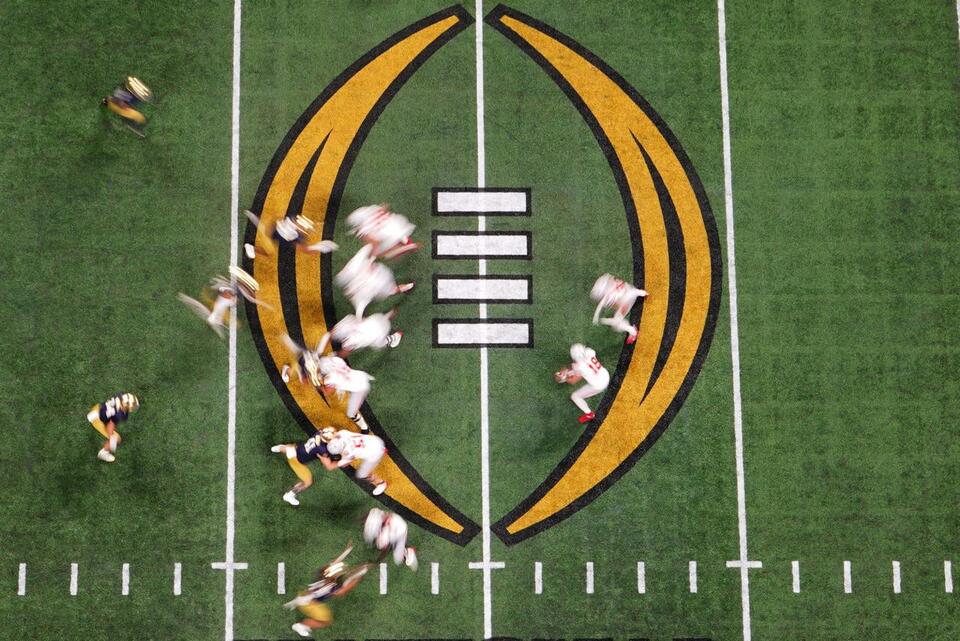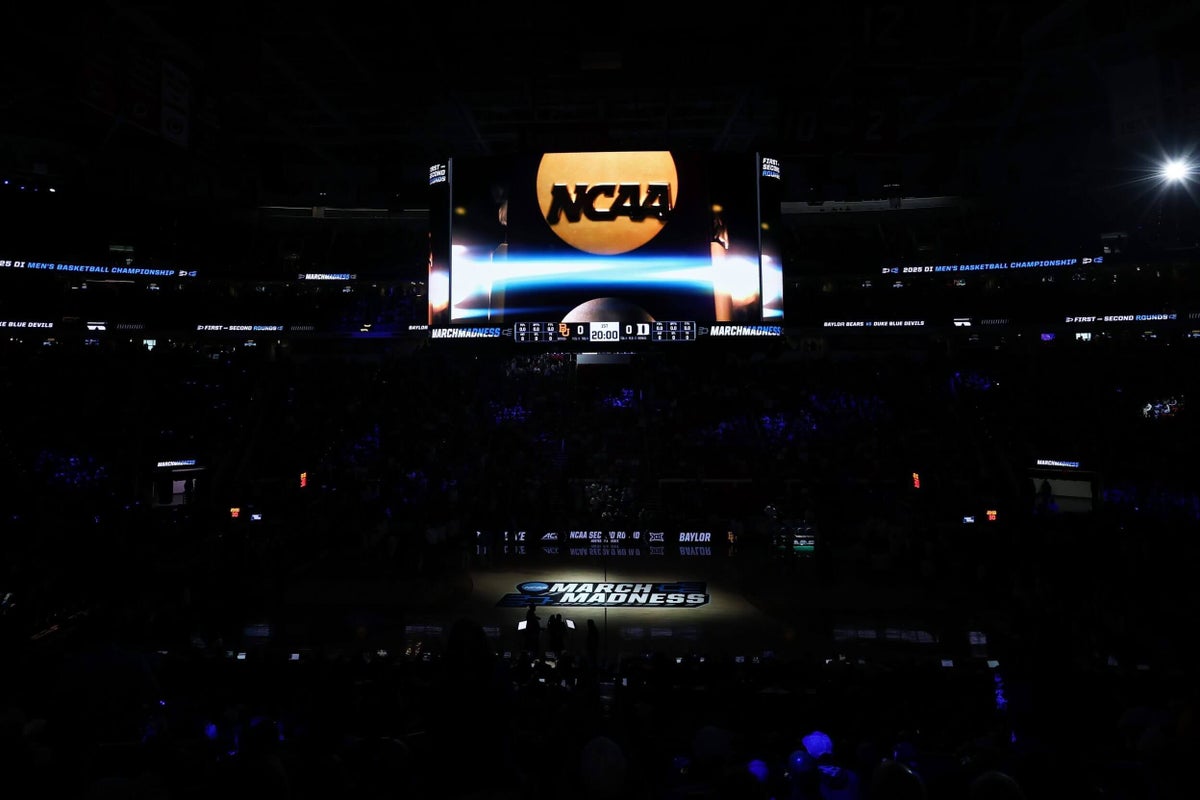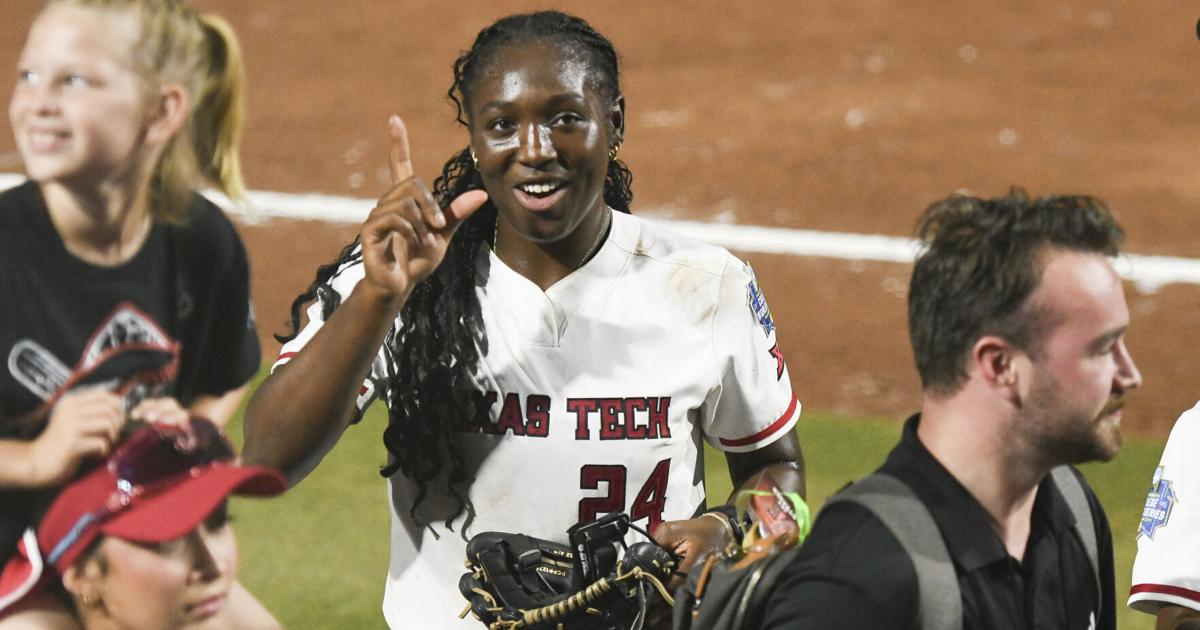By Ralph D. Russo, Stewart Mandel and Justin Williams
A federal judge Friday granted final approval of the House v. NCAA settlement, a watershed agreement in college sports that permits schools to directly pay college athletes for the first time.
The settlement, which resolves a trio of antitrust cases against the NCAA and its most powerful conferences, establishes a new 10-year revenue sharing model in college sports, with athletic departments able to distribute roughly $20.5 million in name, image and likeness (NIL) revenue to athletes over the 2025-26 season. Previously, athletes could earn NIL compensation only with outside parties, including school-affiliated donor collectives that have become instrumental in teams’ recruiting.
The NCAA and the power conferences (ACC, Big 12, Big Ten, Pac-12 and SEC), as defendants in the settlement, also agree to pay nearly $2.8 billion in damages to Division I athletes who were not allowed to sign NIL deals, dating back to 2016. The damages will be paid out over 10 years, with most of the money expected to go to former power-conference football and men’s basketball players.
Universities can begin directly sharing revenue with college athletes starting July 1.
Judge Claudia Wilken of the Northern District of California, who previously ruled against the NCAA in the O’Bannon and Alston cases, granted approval roughly a year after parties agreed to settlement terms and nearly two months after a final approval hearing on April 7, when Wilken heard testimony from more than a dozen objectors. Lawyers for both the plaintiffs and defendants noted that the number of objections and opt-outs in the settlement represent a tiny fraction of the nearly 400,000 athletes in the certified class.
However, some of those objectors delayed approval, largely citing the settlement’s new roster limits. These limits, which replace sport-by-sport scholarship limits, cap the maximum roster size per team while allowing for every roster spot to receive a scholarship. Schools can offer scholarship funds — partial or full — as they see fit, which creates more potential opportunities. But as schools preemptively prepared to comply with those new limits, they removed roster spots for thousands of walk-ons, particularly in football, and partial scholarship athletes in non-revenue sports.
In late April, Wilken offered an ultimatum, instructing the settlement parties to revise the terms in a way that mitigated any lost roster spots as a result of schools preparing for the new roster limits, or she would deny the whole agreement. Settlement lawyers responded with an amendment that allows for voluntary “grandfathering” of any athletes who lost roster spots as a result of the roster limits, a status that will follow those athletes through the remainder of their eligibility, whether they return to their original school or transfer elsewhere.
The initial House v. NCAA case — brought by plaintiffs Grant House, a former Arizona State swimmer, and Sedona Prince, then an Oregon women’s basketball player — was filed in June 2020. It challenged NCAA policy at the time that prohibited athletes from being compensated for the commercial use of their NIL rights or from sharing in the revenue generated from NCAA and conference television contracts. The case was later consolidated with two similar suits, Carter v. NCAA and Hubbard v. NCAA.
The cases had not gone to trial. The NCAA and Power 5 conferences, fearful a verdict might result in much higher damages, agreed to a settlement in May 2024. Wilken granted preliminary approval in October 2024.
The NCAA’s traditional amateurism model, in which athletes could not receive any compensation beyond a scholarship, began to crumble in 2014 when Wilken ruled against the NCAA in a suit brought by former UCLA star Ed O’Bannon, who objected to his image being used in an EA Sports video game without his permission. Wilken ruled for the plaintiffs, but after an appeals court struck part of her decision, the only tangible effect was that schools began offering cost-of-attendance stipends.
The next major case, Alston v. NCAA, made it to the Supreme Court, where the justices ruled 9-0 against the NCAA. Often mischaracterized as a case about NIL, Alston’s main impact was that it allowed schools to provide athletes $5,980 a year in academic expenses. However, the lopsided decision left the NCAA vulnerable to additional legal challenges regarding rules that limited compensation, and it was delivered on June 21, 2021, nine days before numerous state laws allowing NIL payments were set to go into effect. The NCAA quickly scrapped most of its intended restrictions on NIL.
In the years since, many athletes have entered into deals with local companies and struck lucrative endorsement deals with national brands like Gatorade and New Balance, as intended. But a far more common practice involves boosters using purported NIL deals to lure recruits or players from the transfer portal to their favorite school. The NCAA’s enforcement division initially sought to punish schools that used NIL as a form of “pay for play” or recruiting inducement, but when the University of Tennessee came under fire in early 2024, the state’s attorney general sued, and a judge issued an injunction prohibiting the NCAA from enforcing those rules.
The amount of money being spent in the NIL arena has skyrocketed since 2021. Last year, Ohio State athletic director Ross Bjork said the Buckeyes football team — which later won the national championship — was earning $20 million in NIL. CBS Sports recently reported that a number of men’s basketball rosters have already topped $10 million for next season.
To this point, collectives supporting specific schools have ruled the market, but administrators are hoping the House settlement will curtail that influence. In addition to schools being allowed to make NIL deals themselves, the new model also requires all outside NIL deals of more than $600 to go through a clearinghouse that will determine whether the payments are for a valid business purpose and reflect fair market value. Meanwhile, the settlement establishes an enforcement arm that will penalize schools that go over the $20.5 million cap. All of this will be overseen by the newly established regulatory body, called the College Sports Commission, which is in the process of shifting considerable oversight and control of college sports away from the NCAA and to the power conferences.
The NCAA’s Division I Board of Directors recently approved a series of proposals, pending settlement approval, that will strike 153 rules from the association’s handbook and clear the way for the settlement terms to be implemented.
The settlement represents a significant shift in college sports, but it will not mark the end of the NCAA’s legal challenges. Among numerous ongoing cases, Johnson v. NCAA was filed in 2019 in Pennsylvania and seeks to have athletes classified as employees who are entitled to minimum wage compensation. The NCAA’s efforts to dismiss the case have thus far been denied. Revenue sharing and third-party NIL constraints could also invite additional lawsuits on the basis of Title IX, antitrust violations and conflicts with state laws.
NCAA and power conference stakeholders continue to pursue antitrust exemptions in the form of Congressional intervention, in hopes of codifying the settlement and its effectiveness moving forward. President Donald Trump has explored a new commission focused on the issues facing college sports, led by former Alabama head coach Nick Saban and billionaire Texas Tech board chair Cody Campbell, though it is paused as members of Congress pursue legislation.
(Photo: Jared C. Tilton / Getty Images)






























































